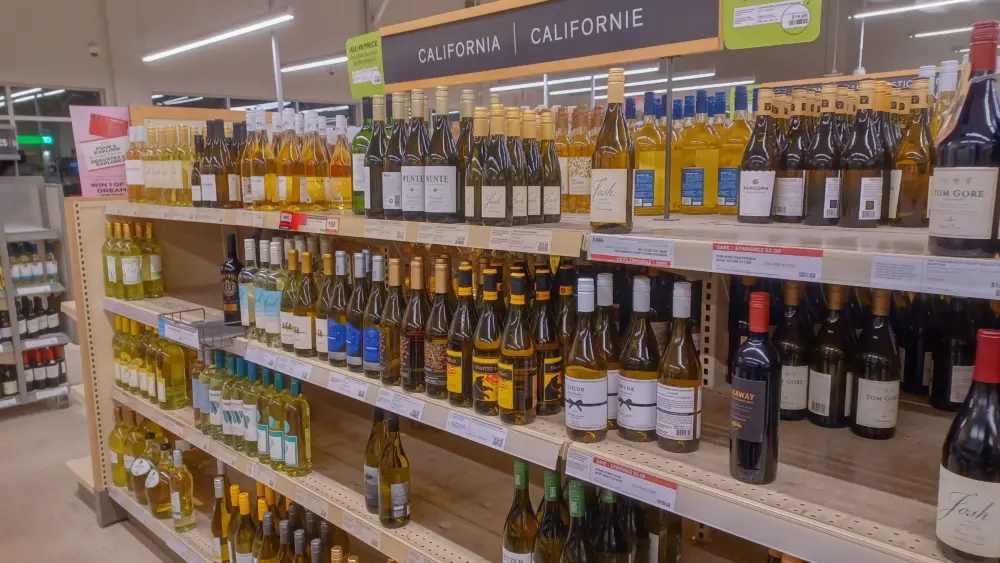
Santa Rosa’s Vintage Wine Estates and Napa Valley’s Duckhorn Vineyards are going public. Both companies have exceptional leadership, and both look to buck the recent trend of wine companies failing after going public.
With the added funds, Vintage and Duckhorn are poised to accelerate their existing business strategies: Vintage will continue to acquire brands in the less-than-$20 category, while Duckhorn will shop for wine brands, ranging from $20 to $200 per bottle.
Do wineries make sense for Wall Street?
For the last two decades, there has been reluctance on Wall Street to find excitement around investing in a wine producer for two reasons. Their past experiences are rife with failure, and the wine business model is mostly antithetical to the turn-and-burn culture of financial markets, where the “long view” is limited to the next quarter. In the world of winemaking, grapes are harvested only once a year, and the product might need to age for years before it can be sold.
Wall Street’s reluctance does not mean investors have shied away from wine producers altogether. Quite the contrary. Private equity firms (PE) have slowly been throwing money at the industry for a long time, quietly gaining increased sway in business decisions and setting up the inevitable moment when their portfolio wineries are sold.
PEs, IPOs and SPACs
In 2007, the PE firm GI Partners assumed majority ownership of Duckhorn, and then sold its shares in 2016 to TSG Consumer Partners, a rival Bay Area PE firm. Almost like clockwork, in February 2021 Duckhorn filed a proposed $300 million initial public offering (IPO) under the stock ticker, NAPA. On March 18, the first day of trading, the stock closed at $17.53 per share, 14.5% over its initial launch price of $15 per share. Over the years, Duckhorn has reportedly received at least $536 million from investors, and as of Jan. 31 it had $9.3 million in cash and $504 million in total liabilities. Funds raised by the IPO will go to buying down debt, payouts to investors and shareholders, and acquisitions.
Vintage Wine Estates was created in 2003 by Pat Roney with a significant investment from another vintner and serial entrepreneur, Leslie Rudd. Since then, Roney has been purchasing a consistent stream of “value” brand wines and slowly building momentum and market strength. Today, Roney and his team produce 2 million cases of wine a year under 50 different brands. Unlike Duckhorn, Vintage is not going for the standard IPO but has opted for the new darling of small companies looking for Wall Street capitalization: a SPAC (special purpose acquisition corporation), which is a merger with an already public entity whose business is acquiring existing publicly traded companies, in this case a “private equity” firm from the United Kingdom, Bespoke Capital Partners. The deal values Vintage at more than $600 million.
Cautionary tales
Robert Mondavi Winery initially went public in 1993, selling 2.5 million shares for just over $13 a share and raising nearly $30 million in the process. But soon after, the winery faced mounting challenges within its leadership group and its growth stalled. The winery eventually sold to Constellation Brands for a record-breaking $1.03 billion in 2004.
Ravenswood, a Sonoma County winery best known for its Zinfandel, was launched by Joel Peterson in 1976. And in 1999, the winery raised nearly $11 million through an IPO that sold 1 million shares—representing just over a 20% stake in the company. In 2001, two years after going public, Ravenswood was bought by Constellation Brands for $148 million. Today, the once-revered brand is all but defunct.
In 1984 Chalone Wine Group, with $1.7 million in annual sales, raised $5 million from an IPO and became the first publicly traded premium wine producer in the United States. The influx of cash sent the co-owners of the brand at the time—Richard Graff and Philip Woodward, both of whom had extensive business backgrounds—on a buying spree. The strategy went well at first, with investors willing to wait for returns or swap cash dividends for wine. Eventually investors tired of mounting losses, and in 2005 Chalone Wine Group was purchased by beverage giant Diageo and then sold again in 2016 to Foley Family Wines.
The future of wine is M&A
Mergers and acquisitions are nothing new, but they are often tricky in the business of wine. Making wine—unlike making beverages such as sodas, flavored waters or even beer or spirits—is difficult to scale up at the drop of the hat. Because grapes are harvested once a year and subject to factors such as climate, wildfire smoke and drought, every vintage is unpredictable, which is often the greatest fear of Wall Street investors. That said, I expect a rash of wineries searching for capital to partner with private equity or go public through SPACs or IPOs. If you’re a smaller, well-managed wine brand that has even modest traction in the marketplace, don’t be too surprised if you soon start getting serious inquiries.
Author
-

Tim Carl lives, writes and teaches in Calistoga. He grew up in St. Helena and traces his Calistoga grape-growing roots back five generations. You can reach him at tcarl@northbaybiz.com.
View all posts



